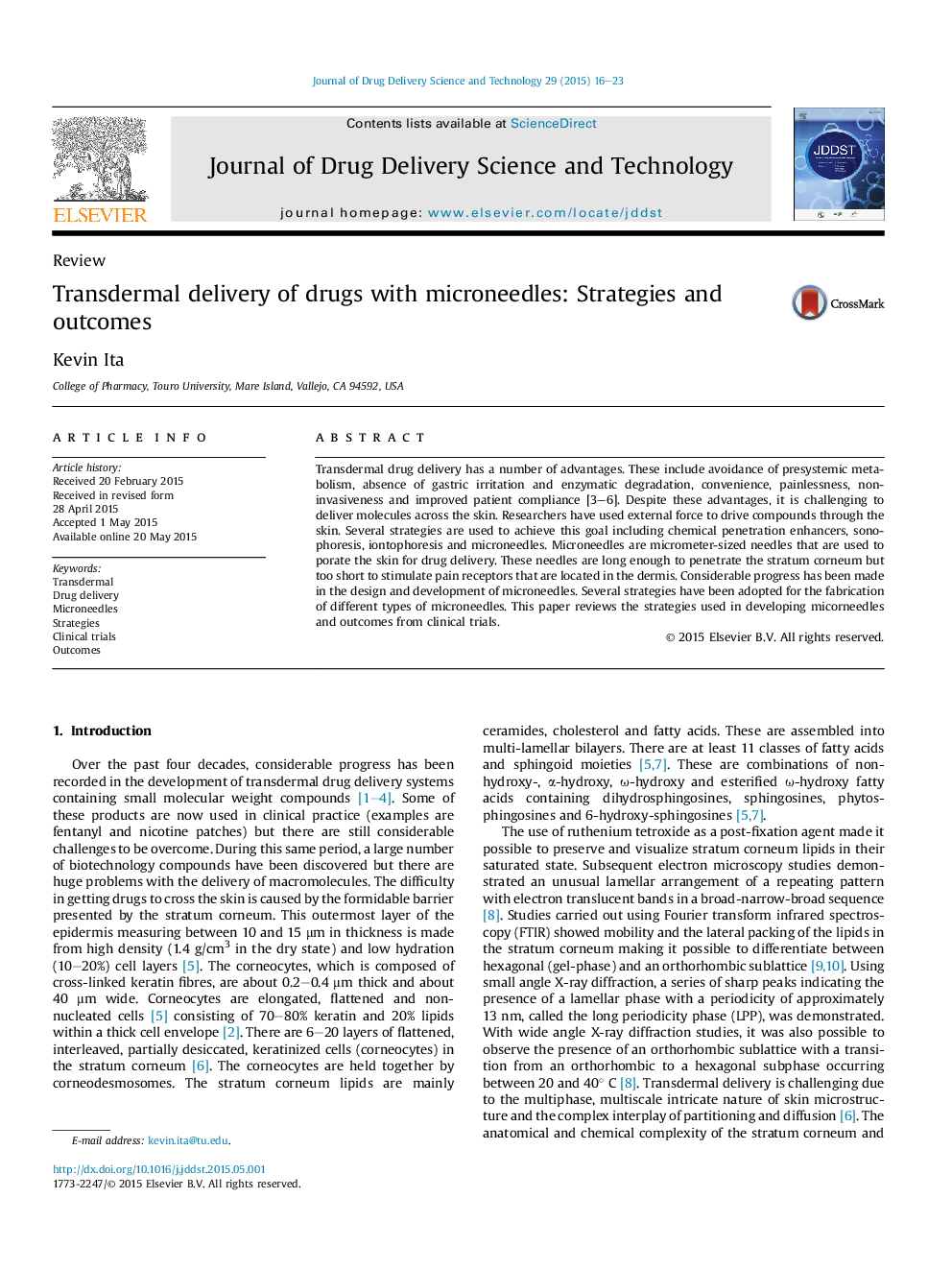| Article ID | Journal | Published Year | Pages | File Type |
|---|---|---|---|---|
| 2483199 | Journal of Drug Delivery Science and Technology | 2015 | 8 Pages |
Transdermal drug delivery has a number of advantages. These include avoidance of presystemic metabolism, absence of gastric irritation and enzymatic degradation, convenience, painlessness, non-invasiveness and improved patient compliance [3–6]. Despite these advantages, it is challenging to deliver molecules across the skin. Researchers have used external force to drive compounds through the skin. Several strategies are used to achieve this goal including chemical penetration enhancers, sonophoresis, iontophoresis and microneedles. Microneedles are micrometer-sized needles that are used to porate the skin for drug delivery. These needles are long enough to penetrate the stratum corneum but too short to stimulate pain receptors that are located in the dermis. Considerable progress has been made in the design and development of microneedles. Several strategies have been adopted for the fabrication of different types of microneedles. This paper reviews the strategies used in developing micorneedles and outcomes from clinical trials.
Graphical abstractFigure optionsDownload full-size imageDownload as PowerPoint slide
